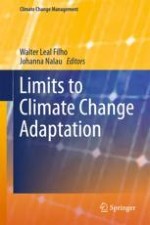2018 | OriginalPaper | Chapter
18. A ‘Cost Barrier’ Perspective to Adaptation on a Coral Triangle Initiative (CTI) and Mangrove Rehabilitation Projects (MRP) in Solomon Islands
Authors : Michael Otoara Ha’apio, Walter Leal Filho, Morgan Wairiu
Published in: Limits to Climate Change Adaptation
Publisher: Springer International Publishing
Activate our intelligent search to find suitable subject content or patents.
Select sections of text to find matching patents with Artificial Intelligence. powered by
Select sections of text to find additional relevant content using AI-assisted search. powered by
